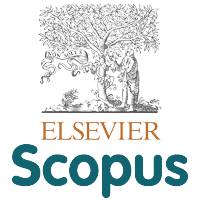Production of Insect Toxin Beauvericin from Entomopathogenic Fungi Cordyceps militaris by Heterologous Expression of Global Regulator
Abstract
Keywords
Full Text:
PDFReferences
Chiang, Y.-M., Lee, K.-H., Sanchez, J. F., Keller, N. P., & Wang, C. C. C. (2009). Unlocking fungal cryptic natural products. Natural Product Communications, 4(11), 1505–1510. Retrieved from website
Isaka, M., Kittakoop, P., Kirtikara, K., Hywel-Jones, N. L., & Thebtaranonth, Y. (2005). Bioactive substances from insect pathogenic fungi. Accounts of Chemical Research, 38(10), 813–823. crossref
Isaka, M., Rugseree, N., Maithip, P., Kongsaeree, P., Prabpai, S., & Thebtaranonth, Y. (2005). Hirsutellones A-E, antimycobacterial alkaloids from the insect pathogenic fungus Hirsutella nivea BCC 2594. Tetrahedron, 61, 5588-5583. crossref
Isaka, M., Tanticharoen, M., Kongsaeree, P., & Thebtaranonth, Y. (2001). Structures of cordypyridones A−D, antimalarial N -hydroxy- and N -methoxy-2-pyridones from the insect pathogenic fungus Cordyceps nipponica. The Journal of Organic Chemistry, 66(14), 4803–4808. crossref
Keller, N., Bok, J., Chung, D., Perrin, R. M., & Shwab, E. K. (2006). LaeA, a global regulator of Aspergillus toxins. Medical Mycology, 44(SUPPL. 1), 83–85. crossref
Lee, H., Kim, Y. J., Kim, H. W., Lee, D. H., Sung, M.-K., & Park, T. (2006). Induction of apoptosis by Cordyceps militaris through activation of caspase-3 in leukemia HL-60 cells. Biological & Pharmaceutical Bulletin, 29(4), 670–4. crossref
Lee, S.-Y., Kinoshita, H., Ihara, F., Igarashi, Y., & Nihira, T. (2008). Identification of novel derivative of helvolic acid from Metarhizium anisopliae grown in medium with insect component. Journal of Bioscience and Bioengineering, 105(5), 476–80. crossref
López-Berges, M. S., Hera, C., Sulyok, M., Schäfer, K., Capilla, J., Guarro, J., & di Pietro, A. (2013). The velvet complex governs mycotoxin production and virulence of Fusarium oxysporum on plant and mammalian hosts. Molecular Microbiology, 87(1), 49–65. crossref
Luangsa-Ard, J. J., Berkaew, P., Ridkaew, R., Hywel-Jones, N. L., & Isaka, M. (2009). A beauvericin hot spot in the genus Isaria. Mycological Research, 113, 1389-1395. crossref
Ng, T. B., & Wang, H. X. (2005). Pharmacological actions of Cordyceps, a prized folk medicine. Journal of Pharmacy and Pharmacology, 57(12), 1509–1519. crossref
Ownley, B. H., Gwinn, K. D., & Vega, F. E. (2009). Endophytic fungal entomopathogens with activity against plant pathogens: Ecology and evolution. In H. E. Roy, F. E. Vega, D. Chandler, M. S. Goettel, J. Pell, & E. Wajnberg (Eds.), The Ecology of Fungal Entomopathogens (pp. 113–128). Dordrecht: Springer. crossref
Patananan, A. N., Palmer, J. M., Garvey, G. S., Keller, N. P., & Clarke, S. G. (2013). A novel automethylation reaction in the Aspergillus nidulans LaeA protein generates S-methylmethionine. Journal of Biological Chemistry, 288(20), 14032–14045. crossref
Rachmawati, R., Kinoshita, H., & Nihira, T. (2013). Establishment of transformation system in Cordyceps militaris by using integration vector with benomyl resistance gene. Procedia Environmental Sciences, 17, 142–149. crossref
Rukachaisirikul, V., Pramjit, S., Pakawatchai, C., Isaka, M., & Supothina, S. (2004). 10-Membered macrolides from the insect pathogenic fungus Cordyceps militaris BCC 2816. Journal of Natural Products, 67(11), 1953–1955. crossref
Zimmermann, G. (2007). Review on safety of the entomopathogenic fungi Beauveria bassiana and Beauveria brongniartii. Biocontrol Science and Technology, 17(6), 553–596. crossref
DOI: http://doi.org/10.17503/agrivita.v40i1.1727
Copyright (c) 2017 Universitas Brawijaya

This work is licensed under a Creative Commons Attribution-NonCommercial 4.0 International License.








